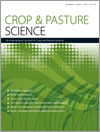Sugarcane ripening is a process controlled by cultivar characteristics and the interaction of genotypes with local climate. The objective of this study was to characterise the temporal variation of sugarcane ripening by assessing the multivariate structure contained in sugarcane quality data, and by correlating the results with local climatic conditions. Eight sugarcane cultivars were evaluated from March to October in Piracicaba, São Paulo State, Brazil. Characteristics related to the quality of raw sugarcane juice were submitted to statistical analysis by ANOVA, hierarchical and non-hierarchical (k-means) clustering methods, and principal components, in order to classify the cultivars into groups for each month of sampling. The ANOVA showed a clear difference (P < 0.001) among harvesting months for all sugarcane quality variables, which was reinforced by the cluster analysis for the whole dataset that selected groups according to the month of harvest. By analysing the quality variables by months, patterns of similarity among sugarcane cultivars were identified, which allowed three ripening groups to be established: early, middle and late. As the harvesting season progressed, the variations within each group, as well as among groups, were explained mainly by local soil-water availability conditions. The early ripening cultivars showed polarisable sugar (Pol) values >13% in early May, whereas these values were reached by the middle cultivars in July, and the late ones in August–September. However, the differences among groups tended to decrease through the harvest season, as expressed by the Euclidean distance, which decreased from 5.62 in March to 1.82 in September, when the water deficit reached the maximum accumulated value, totalling >130 mm. The non-hierarchical analyses (k-means) and principal components methods agreed, resulting in the identification of the same three main cultivar groups. The approach proposed for cultivar classification in this study is more complete than the usual analysis of Pol variation over time, since it allowed all of the variability contained in the sugarcane quality dataset to be analysed in an integrated way, providing a better understanding of the differences observed in the ripening of different cultivars.
How to translate text using browser tools
14 April 2014
Multivariate analysis of the temporal variability of sugarcane ripening in south-eastern Brazil
Nilceu P. Cardozo,
Paulo C. Sentelhas,
Alan R. Panosso,
Antonio S. Ferraudo
ACCESS THE FULL ARTICLE
<
Previous Article
|

Crop and Pasture Science
Vol. 65 • No. 3
April 2014
Vol. 65 • No. 3
April 2014




